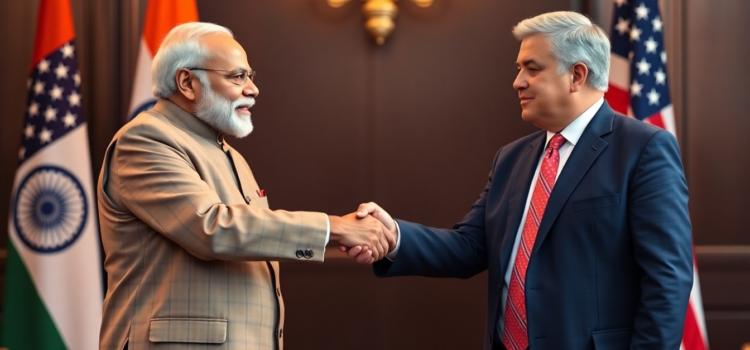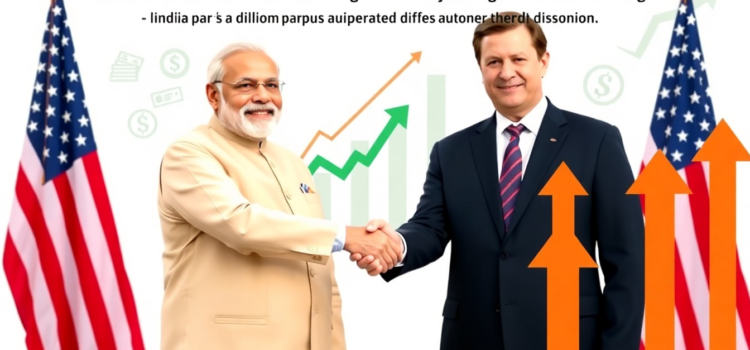
U.S.-India Trade Talks Set Ambitious $500 Billion Trade Target by 2030
The United States and India have recently announced significant progress in their ongoing trade negotiations, aiming to double the current volume of bilateral trade to an ambitious $500 billion by 2030. As the U.S. stands as India’s largest trading partner, the two nations have laid down a comprehensive roadmap to facilitate this strengthened economic partnership.
Introduction
Can the U.S. and India achieve an economic partnership that sets the benchmark for global trade in the coming decade? In a historic move, the two countries have initiated a strategic plan to double their trade volume to $500 billion by the end of this decade. This milestone agreement addresses crucial areas such as tariff reduction, market access, and supply chain integration across several sectors, signaling the dawn of an era committed to mutual economic growth and innovation.
The Ambitious Roadmap: Doubling Trade Volume
The U.S.-India trade talks have set an ambitious roadmap aiming to double the bilateral trade volume to $500 billion by 2030. This initiative focuses on developing a new and modern trade agreement that enhances job creation, improves citizen welfare, ensures balanced bilateral trade, and integrates supply chains. Furthermore, a 90-day tariff pause has been enacted after the U.S. reduced punitive tariffs on Indian exports as part of the negotiations.
Modern Trade Agreement Goals
- Job creation and enhancement of citizen welfare.
- Balanced bilateral trade between the two nations.
- Integration of supply chains across key sectors.
Strategic Cooperation and Defense Collaboration
Reflecting on strategic cooperation, both nations have embraced stronger ties in defense, energy, strategic technologies, and innovation. India has committed to increasing its imports of U.S. oil and gas as a measure to offset the existing trade surplus with the United States. The defense collaboration, notably, will see India integrating advanced American military hardware into its defense systems, with a new 10-year framework for defense partnership expected to be signed this year.
Key Elements of Strategic Cooperation
- Collaboration on defense technologies and frameworks.
- Increased U.S. exports to India in the oil and gas sectors.
- Enhanced focus on innovation and strategic technologies.
Implications for Global Trade and Regional Competition
The trade negotiations and deepening economic ties between the U.S. and India occur against the backdrop of ongoing global tariff strategies, particularly in the face of increasing regional competition involving China. These talks are not only set to boost economic growth through India-U.S. trade but also to reshape the landscape of international trade partnerships.
Global and Regional Trade Impacts
- Potential reduction in trade barriers.
- Increased foreign direct investment in both countries.
- Opportunities for investment in agriculture and dairy trade, technology, and innovation.
Conclusion
In conclusion, the progression of U.S.-India trade talks signals a new era of economic integration and strategic partnership. The roadmap to double bilateral trade to $500 billion by 2030 is set to create substantial job opportunities, enhance supply chain efficiencies, and strengthen defense cooperation, establishing the foundation for a robust future relationship.
Engage in Discussions: Share Your Thoughts
Frequently Asked Questions
What is the goal of the U.S.-India trade talks?
The goal is to double the bilateral trade volume to $500 billion by 2030, focusing on job creation, balanced trade, and supply chain integration.
How will the trade agreement affect U.S. exports to India?
The agreement is expected to increase U.S. exports to India, particularly in sectors such as oil and gas, thus contributing to a more balanced trade.
What kind of defense cooperation is envisioned in these discussions?
Defense cooperation includes integrating advanced American military hardware into India’s systems and planning for a new 10-year defense framework.
Why is there a 90-day tariff pause?
The tariff pause allows for negotiating the first tranche of the anticipated trade deal, temporarily reducing tariffs from 26% to 10%.























Comments